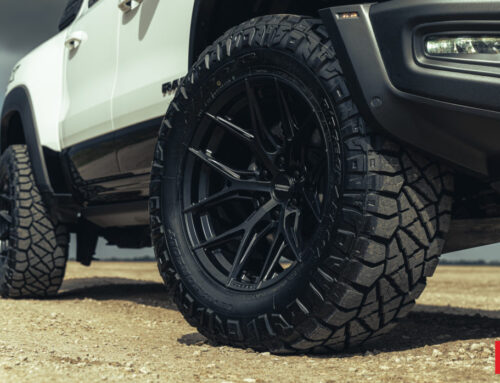Tire pressure is a fundamental aspect of vehicle maintenance that is often overlooked. However, it plays a critical role in vehicle performance and safety. For car enthusiasts and auto mechanics alike, understanding the intricacies of tire pressure can lead to more efficient, safer, and enjoyable driving experiences. This blog post will delve into the importance of maintaining proper tire pressure and how it affects various aspects of your vehicle.
Understanding Tire Pressure
Tire pressure refers to the air inside the tire, measured in pounds per square inch (PSI). Maintaining the correct tire pressure is pivotal for optimal vehicle performance and safety, and incorrect tire pressure can lead to a range of issues, from reduced fuel efficiency to compromised handling and increased risk of accidents.
Impact on Vehicle Performance
Fuel Efficiency
Proper tire pressure can significantly improve fuel efficiency. Under-inflated tires create more rolling resistance, which forces the engine to work harder and consume more fuel. Conversely, over-inflated tires reduce the contact area with the road, leading to uneven tire wear and decreased fuel efficiency. Maintaining the right tire pressure ensures that your vehicle operates at its peak efficiency, saving you money on fuel in the long run.
Handling and Stability
Tire pressure plays a crucial role in a vehicle’s handling and stability. Under-inflated tires can make the car feel sluggish and unresponsive, while over-inflated tires can make the ride harsh and uncomfortable. Both scenarios can compromise the vehicle’s stability, especially during sharp turns or emergency maneuvers. Proper tire pressure ensures that the tires maintain adequate contact with the road, providing better grip and control.
Impact on Safety
Braking Distance
Tire pressure directly influences a vehicle’s ability to stop quickly. Under-inflated tires increase the braking distance, making it harder to stop the vehicle in time to avoid a collision. Over-inflated tires, on the other hand, can cause the vehicle to skid or lose control during sudden braking. Maintaining the correct tire pressure can greatly enhance braking performance, reducing the risk of accidents.
Tire Wear and Tear
Tire pressure also affects how the tires wear over time. Under-inflated tires wear out more quickly on the edges, while over-inflated tires wear down the center tread. Uneven tire wear shortens the tires’ lifespan and increases the risk of tire blowouts, which can be extremely dangerous. Regularly checking and adjusting tire pressure can help prevent uneven wear and extend the life of your tires.

How to Maintain Proper Tire Pressure
Step-by-Step Guide to Checking Tire Pressure
- Gather Your Tools: You will need a reliable tire pressure gauge and an air compressor.
- Check When Cold: Measure tire pressure when the tires are cold, as heat can cause the air inside to expand and give inaccurate readings.
- Locate the Recommended PSI: Find the recommended tire pressure for your vehicle, usually located in the owner’s manual or on a sticker inside the driver’s door.
- Remove the Valve Cap: Unscrew the cap from the tire valve.
- Check the Pressure: Press the tire pressure gauge onto the valve stem and take a reading.
- Adjust as Needed: If the pressure is too low, add air until it reaches the recommended level. If it’s too high, release some air until it matches the recommended PSI.
- Replace the Valve Cap: Once the pressure is correct, replace the valve cap and repeat the process for all tires, including the spare.
Recommended Tools
- Tire Pressure Gauge: Digital or analog gauges are both reliable.
- Air Compressor: A portable air compressor is convenient for regular adjustments.
- Tire Inflator with Gauge: Combines the functions of measuring and inflating tires.
Frequency of Checks
It’s advisable to check tire pressure at least once a month and before long trips. Regular monitoring can help you catch any issues early and maintain optimal performance and safety.
Common Myths About Tire Pressure
Myth 1: You Only Need to Check Tire Pressure Before Long Trips
Fact: Tire pressure should be checked monthly, not just before long trips. Regular checks help maintain consistent performance and safety.
Myth 2: The PSI Listed on the Tire Sidewall is the Recommended Pressure
Fact: The PSI on the sidewall indicates the maximum pressure the tire can handle, not the recommended pressure for your vehicle. Always refer to the vehicle’s owner manual or the sticker inside the driver’s door for the correct PSI.
Myth 3: You Can’t Have Too Much Air in Your Tires
Fact: Over-inflated tires can lead to uneven tire wear and poor handling. It’s just as important to avoid over-inflation as it is to avoid under-inflation.
Myth 4: New Tires Don’t Require Pressure Checks
Fact: All new or old tires require regular pressure checks to ensure they are operating at their optimal level.
The Importance of Regular Checks
According to the National Highway Traffic Safety Administration (NHTSA), underinflated tires cause approximately 11,000 tire-related crashes each year in the United States. Proper tire pressure can significantly reduce this risk and enhance overall driving safety. For more information, there are 11,000 tire-related crashes each year. Visit the NHTSA website here.
Conclusion
Maintaining proper tire pressure is a simple yet highly effective way to ensure your vehicle performs efficiently and safely. Regular checks and adjustments can improve fuel efficiency, improve handling, and reduce risks associated with tire wear and tear. For car enthusiasts and auto mechanics, understanding the importance of tire pressure is essential to vehicle maintenance.
If you’re in South Florida and looking for expert advice or services related to car customization, wheels, and tires, don’t hesitate to call or visit us at Miami Power Wheels. We offer various services designed to keep your vehicle in top condition.
Stay safe and happy driving!






